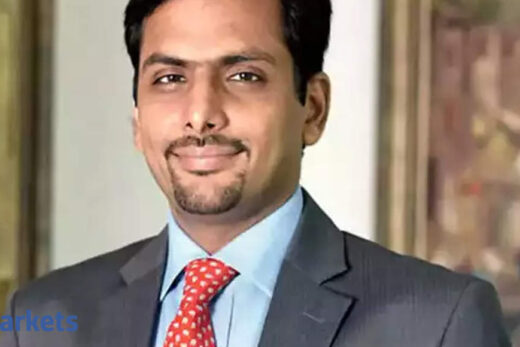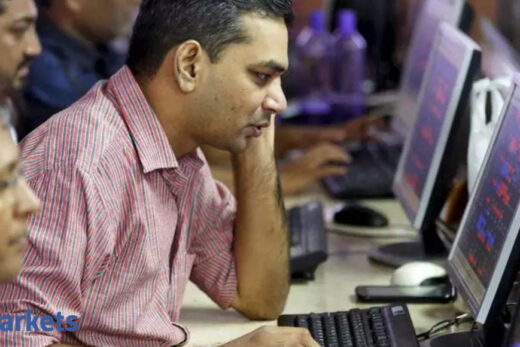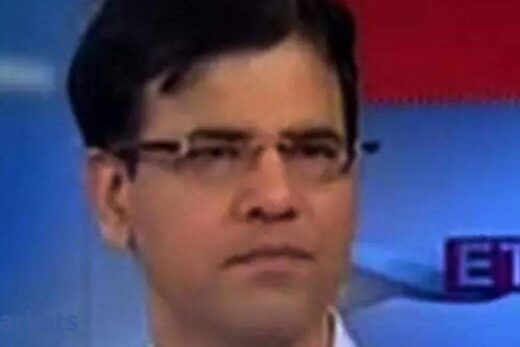How comfortable are you with Nifty trading at 40 PE. If you were a retail investor and managing your own money, will you be buying in this market?
Irrespective of my comfort, the market will operate the way it does and do what it does best – fluctuate. We would prefer markets to be fairly valued generally, but in reality, it often overshoots or undershoots. I started my career in ‘98-99 and have seen the 2000-2004 cycle lows and also the 2008-2014 cycle lows. Obviously from that lens, the current valuations look expensive or stretched. As I am a relatively more conservative investor, I feel that prices in a very fundamental sense, are running ahead of earnings. But we need to remember the new reality, which is that today the cost of capital, particularly in India, for quality companies which borrow money is 3%, 4%, 5% or 6% — one-third to half of what it was in earlier decades.
I would start with the disclaimer that how I invest my money should not be the barometer for anyone else because I invest on the basis of my temperament, my needs and my future investment plans. Currently, my exposure to equity as an asset class would be around 60% and my exposure to fixed income would be around 30 %. The balance would be in sovereign gold bonds. Within this 60% in equity also, it is not only in Nifty-oriented companies. Some of it is in value funds which capture relatively cheaper companies. Some of it is in our commodity funds which are at a cycle low and where they are reflecting very different trends than most other companies in the industry.
Some of these are not even making profits right now and are about to turn around their profits. I can design a portfolio like this because I am in this role and I can see the underlying trends. But I am relatively conservative at this point in time in my portfolio.
Howard Marks in his latest note says how we perceive value has changed because technology companies have come in. So, we do not take cash flows as much into account and rather consider how companies will perform 10 years hence. Do you agree?
Howard Marks is an iconic figure. Narratives change every decade with prices. Tech companies ruled in 1999-2000 with many companies at 100–150 times earnings but some of them did not even have durable earnings. Compared to that, today’s tech companies are more profitable, more solid companies with free cash flows and not really trading at 100 and 150 times, barring some pockets. We are in a scenario when interest rates and cost of capital are very low and when alternate asset classes like fixed income earns almost zero percent return in the rest of the world. That manifests in us valuing future cash flows liberally. It also manifests in us extending the time horizon for that measurement.
The challenge here is how do you know what is going to happen in 2030? We all know that the world has become more unpredictable. Personally, I avoid taking very long-term trends because they are known always in the future. They are clearer in hindsight, rarely in foresight.
Secondly, a lot of that trend is already priced in today and can create disappointing portfolio returns for investors. On value investing, it’s best to respect the basics. Look for companies which will last, have cash flows and are not the most expensive.
What are the problems fund managers face while investing in a bull market?
The challenge we face as an industry is that if you really have to generate long-term wealth for our investors, to use cricket parlance, it has to be a test match approach of patience. However, the score card, the measurement and umpiring is a T20 approach. The real value of our investments is not about the returns today, in the last one year or next one year, but the return over the next 20 years. With most asset classes like gold, real estate and bonds, investor time horizons run in decades while in equity funds, ironically, it’s just a few years. Achieving a good balance of time horizon between investors’ holding period and ours is a challenge.
Our challenge is to get the right balance between surviving for the long term, delivering more consistently in the medium term and ignoring the noise of the short term. I am not saying measure only 10-year data and for nine years forget the measurement. That is also idealistic and not real. Vinit Sambre, Head of Equities at DSP MF, evaluates his entire team on the equity side according to results on a three-five year timeframe. It is a reasonable time within which if you are able to generate better returns over benchmark (on a rolling return basis, not at a point in time), then you are adding value to the consumer.
The second challenge is money comes to us when past returns are very high, and opportunities are relatively lesser. When past returns are very low, money leaves us. This is not just a challenge for us in India, but universally for everyone in the business of money. So in select pockets, we try to manage it by shutting the funds by stopping inflows like we did in our small cap fund a few years back. For almost three years, we kept the fund shut. Sometimes we aggressively try to channelise investors into asset allocation types of products where we can have some leeway of taking fixed income exposure and not being fully invested.
Fund managers always advise not to time the market. On the other hand, every fund house does it, even sectoral or thematic funds. Why do they not follow what they preach?
When we run an investment management business, we cater to very diverse investor groups. We cater to retail investors who are investing for their retirement; we also cater to large institutions and family offices which are trying to optimise the short-term cycle in the market. Our advice has to be through a strong investor lens. Advice is not universal for everyone. For thematic funds, we are far more cautious when we put out recommendations. We very transparently highlight the risk and disclaimers by saying that these are thematic funds and they can have higher degree of volatility.
In my view, timing the market is important only if you have a framework to time it around and understand cycles, valuations and peculiarity of some of the steady state businesses. Ideally you avoid timing there. On the other hand, we respect timing in companies or sectors which are inherently cyclical and volatile. In such themes, we prefer scaling funds at the bottom of the sector cycle. For example, we launched our Healthcare fund in 2018 when the sector was under performing since 2015.
Likewise, in 2020, we advised investment in our Natural Resources & Energy Fund when the energy and metal prices corrected due to Covid lockdowns. We took a view that when growth normalises, this theme could do well. Thus, only for sophisticated investors who prefer thematic funds, we have encouraged these themes at cycle lows. Lastly, we recently launched our Value Fund at a time when value investing is being challenged as a concept.
These are some trends that will need to be timed properly and that is our job. As fund managers, we need to do a bit of sector and cycle timings. If margins are likely to peak or bottom out, be conscious about it so that we are able to articulate that in a simple way and add a lot of value to different investors. Honestly, everything that I spoke to you may not matter to many lay investors like my father or mother who are 75 years old and they do not even understand these nuances. For them, we simply recommend that they stick to a flexi-cap equity fund or a dynamic asset allocation fund which will take care of timing and other factors on its own.
To people who understand and who want to be more discerning, it is important that we communicate clearly for their benefit.
Going by that thesis, do you think it is not the right time to invest in IT and pharma sectoral funds?
There has been a lot of reversion to mean in IT and pharma which were reasonably under owned. They are less cyclical than commodity companies and have higher ROEs and stable cash flows. You will be hard pressed to find any IT or healthcare company which has debt on its books.
For example, in my own portfolio, I would not mind owning a healthcare fund forever for the next 30-40 years because my thesis here is that this is a sector which has a high core ROE. They do not need leverage. Even if the sector goes through the down cycle for a few years, there can be valuations led fluctuation. But the core businesses will not suffer large losses like you have seen in more regulated industries or global industries like metals or energy or even telecom where the sector had very large losses.
When you look at IT and pharma, they are relatively more steady sectors and should always be a part of your core exposure. It could be through thematic funds or it could be through a multi-cap fund. But to investors, my advice is always choose flexi-cap or multi-cap funds because the fund manager can decide your timing.
But I do not mind having the healthcare fund as core holding as I have another personal bias. In the last two-three years, I have seen ageing parents and grandparents and the number of times you go to a hospital or a medical shop and realise how the cost of healthcare is getting inflated for an average Indian.
When you see rising prices of all medical facilities, hospitals, laboratory testing or even medicines, I think a bit differently on this. Who are the beneficiaries of this trend? Largely, the healthcare space. So, if they are solid companies which have strong balance sheets, strong execution and good management, then I do not mind having part of my portfolio in a healthcare fund because eventually these costs are only going to go up. So, this is my hedge for the future for rising medical inflation.
Among thematic funds, there are those which have relatively stable companies. A theme does not mean a bad word or thematic does not mean a bad word. To answer your question on IT and pharma, easy money has been made and incremental returns will not be as high as past returns, but they still remain stable.
Coming to the Quant Fund that you have been marketing quite aggressively last year, it is labelled a very high risk fund. What are those risks?
I need to deep dive a bit on this particular question. We have communicated the design of the DSP Quant Fund extensively and transparently over the last 18 months. The fund is a part of the thematic universe from a product labelling point of view. As it comes under the segment of thematic funds, by design, the risk label that gets attached to it is a high-risk one.
The universe for DSP Quant fund is BSE 200. We seek to reduce the two main types of risks in any equity investing; the risk of bad business and the risk of over paying on valuation. Quant fund eliminates most companies which don’t fulfil our rules, through our focus on forensic filters, governance filters and accounting parameters. So, out of roughly 200 stocks, 110 stocks get eliminated on the quality of business.
It could be inherently bad quality business or a bad cycle for the moment where ROEs are much lower than the cost of capital and the business cycle is not in favour. Such businesses get eliminated and then we apply filters of valuation, growth, consistency of profit, and so on.
Some critics argue that 99% of the time there is no right reason to invest in NFOs because a) there are already funds with proven track record in those categories b) they are not IPOs where you can expect listing gains. How would you counter that?
I will tell you from my own real life experiences. I have lots of friends and family members who know that I am the President at DSP Mutual Fund. So, whenever they see any ad for a NFO – whether from DSP or any other fund – they will just write to me to ask if they should invest in it without really studying the NFO. I always ask them, firstly what have you understood about this NFO to determine whether you should invest in it or not? Number two, largely I would say avoid NFOs unless it is a product which is not there in your portfolio and it has merit and it is something unique and different. Go for it if it is unique and relevant, if you have drivers of long-term returns and it is an inherently good product.
When we bring out a NFO, our intent is to bring products where we believe we can put our own money. If we cannot put our own money, then ideally we will avoid bringing that product to the market but investors also have their own preferences and selection at different points in time.
My advice to investors would be some NFO may make sense in your portfolio but may not make sense in your friend’s portfolio because he may be already having that kind of product. But you have started your journey today and you do not have that fund in your portfolio; if the product is good, if the team has a track record, if the investment philosophy is very clearly communicated to you with proper data and evidence, then you evaluate it. Look for product differentiation, look for product relevance in your existing portfolio, if it meets both of them then say yes, if it does not meet both of them then say no. Talk to expert advisors and distributors and then take a call. An investor may typically not need more than five or six funds. So, although most NFOs may not make sense for them, they may consider specific differentiated products.



